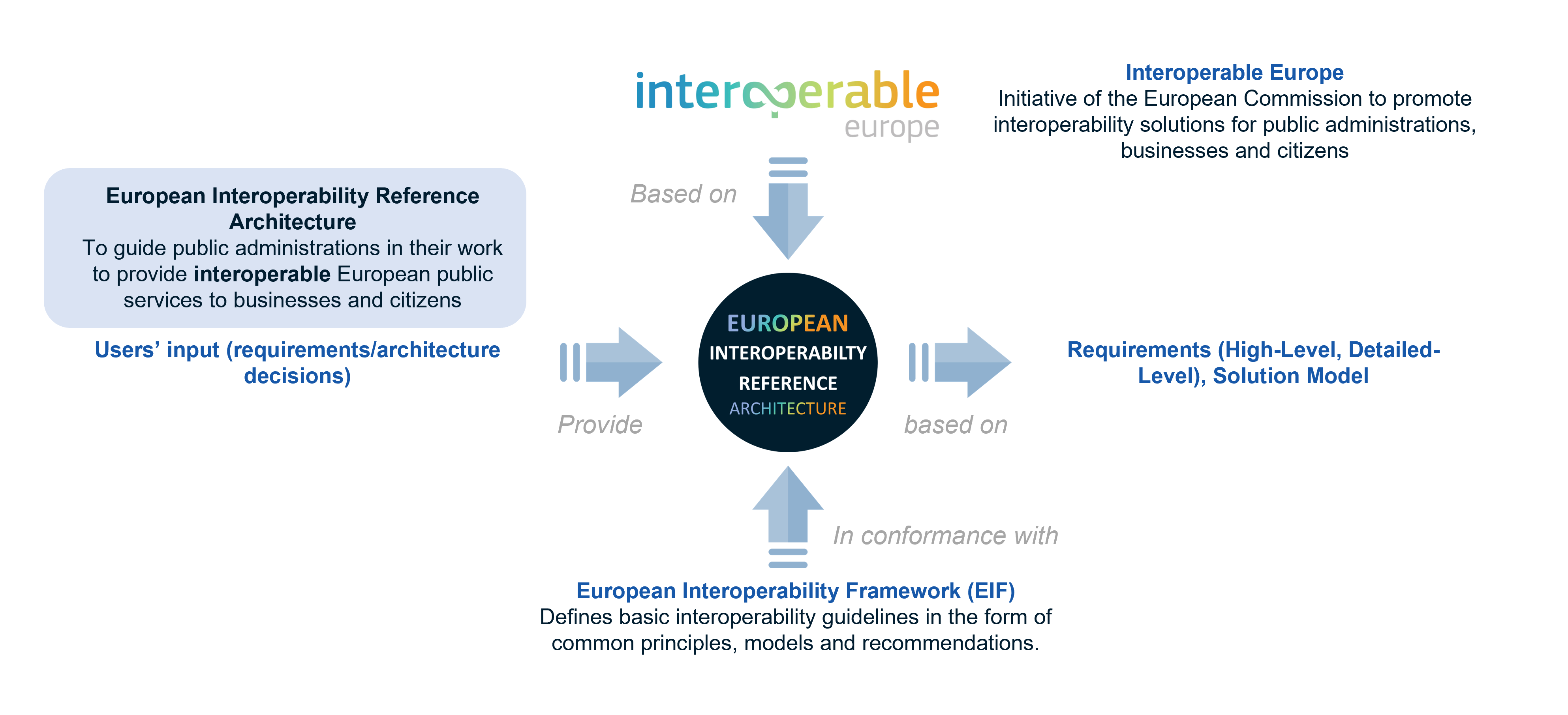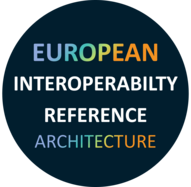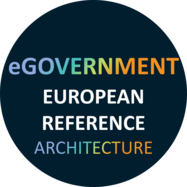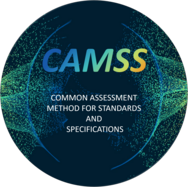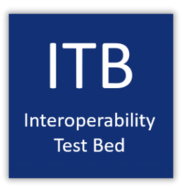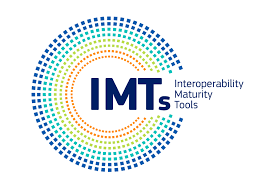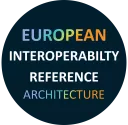Interoperability is the backbone that enables Public Administrations, businesses, and citizens to interact efficiently in a digital ecosystem. It ensures that services and data can be shared across various platforms, systems, and organizations without unnecessary barriers or misunderstandings.
At the heart of fostering interoperability lies the European Interoperability Reference Architecture (EIRA©), a blueprint for the analysis of requirements and the design of interoperable Digital Public Services across borders and sectors.
The Interoperability Architecture collection gathers all information on EIRA© and other solutions to serve this purpose.
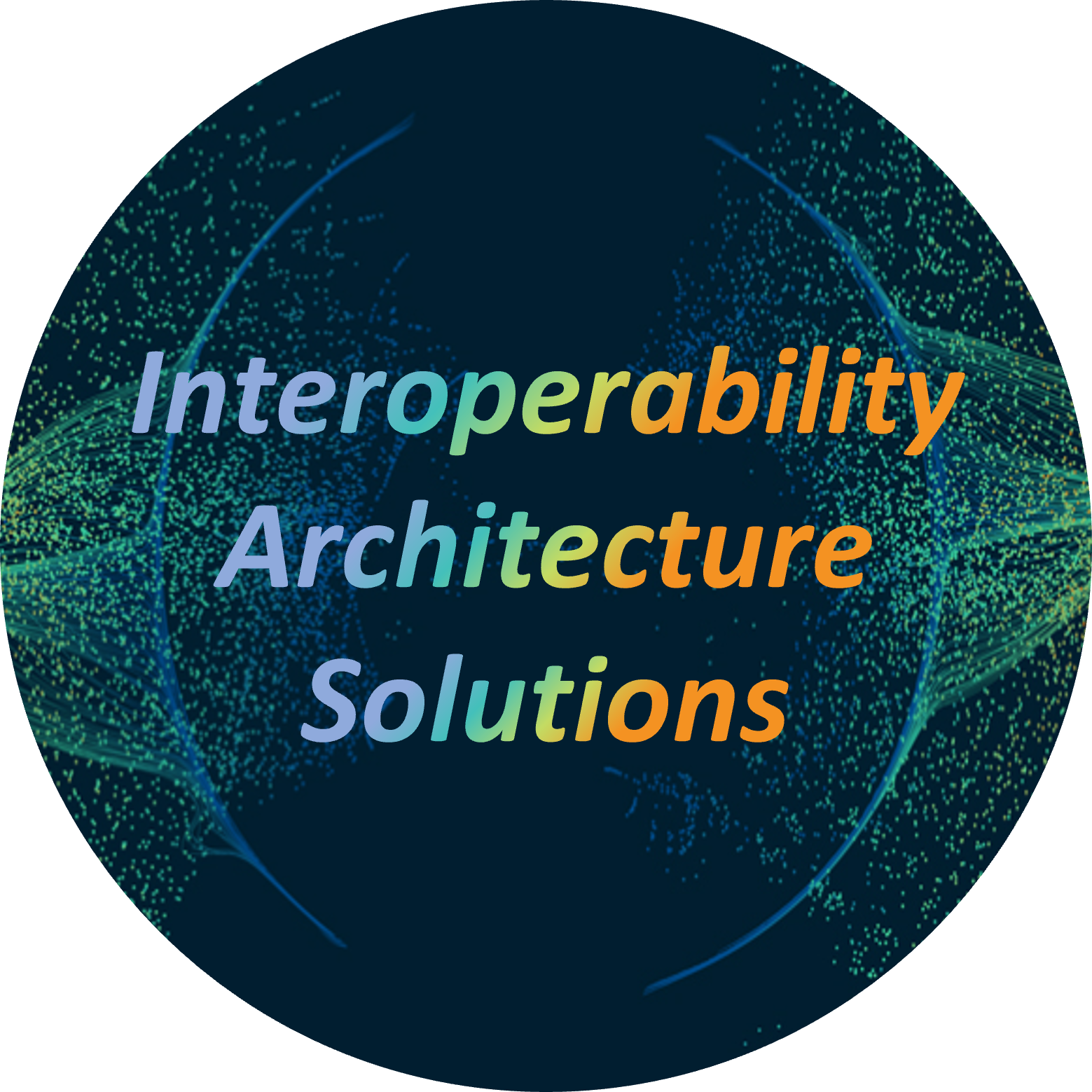
Why do Digital Public Services need Interoperability?
A Digital Public Service (DPS) is a service provisioned by a Public Administration in fulfilment of a public policy goal, servicing to users either citizens, businesses or other Public Administrations.
Due to the faster and faster modernisation of Public Administrations, fostered by technological advancements, the amount of information exchanged between public administrations (across borders and sectors) is rapidly growing. Digital public services, therefore, need to keep it up with this increasing pace by developing and strengthening the ability to exchange information, namely Interoperability.
Interoperability in a DPS is of multidimensional nature, involving:
- Structural interoperability: reusing and/or sharing components (interoperability by design).
- Behavioural interoperability: exchange of data, information or knowledge with its environment.
- Governance interoperability: rules to support a peer-to-peer collaboration with other digital public services.
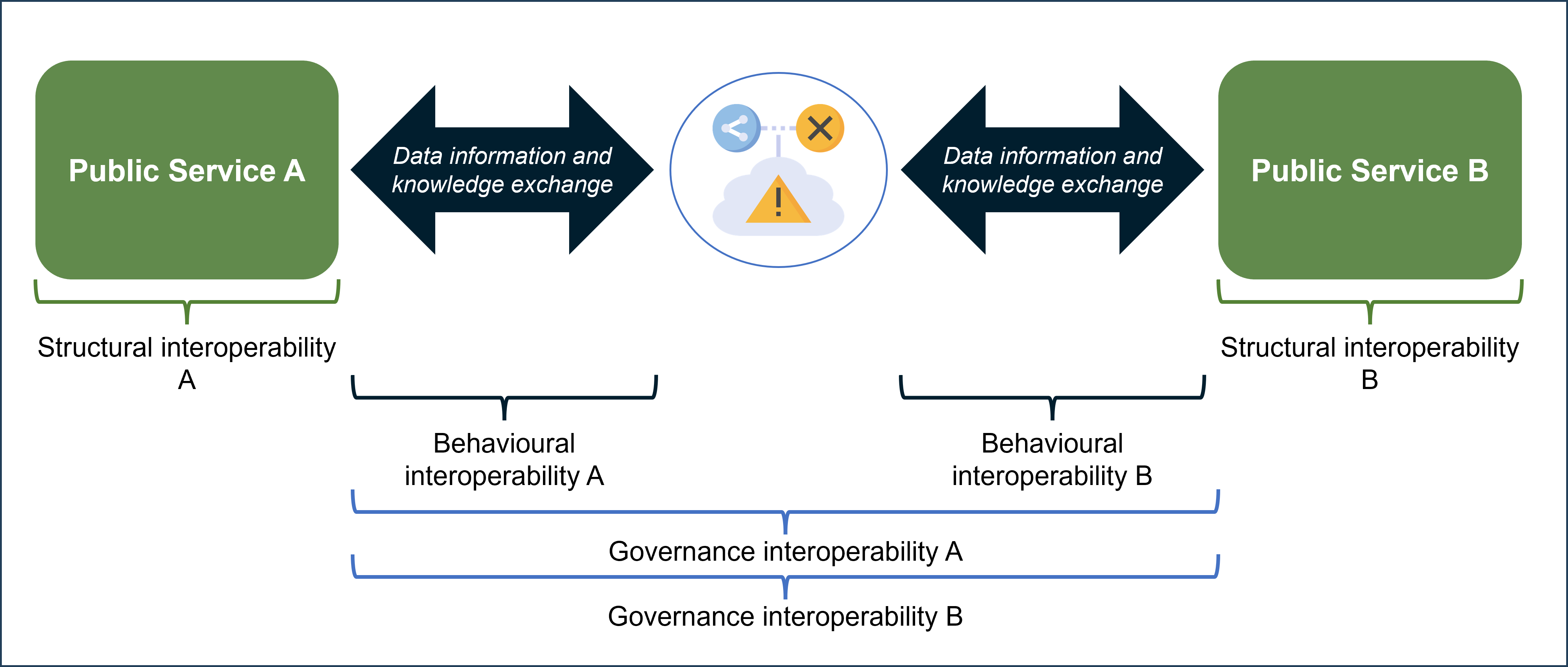
How is the European Commission supporting Interoperability?
The European Commission is active on multiple fronts in the attainment and enhancement of Interoperability:
Overall, the European Union is responding to the need for interoperability with legislative and public policy efforts, with an emphasis on the interoperability of Digital Public Services. The latest of these is the Interoperable Europe Act, a regulatory and co-operative framework to promote interoperability in EU Public Administrations.
EIRA© - The European Interoperability Reference Architecture
The ISA² Action 2016.32 (EIA) has introduced the European Interoperability Reference Architecture (EIRA©) to guide Public Administrations in their work to provide interoperable European Digital Public Services to businesses and citizens across European borders. The continuous development of EIRA© now is being maintained by the Digital Europe Programme (DEP).
EIRA© is based on the interoperability guidelines defined by the European Interoperability Framework (EIF), and it support efforts at European level to foster interoperability, particularly the Interoperable Europe Act and ground-breaking domains like Data Spaces.
More information on this Solution is available here, including the latest release of EIRA© (6.1.0), published in May 2024.
eGovERA© - The eGovernment European Reference Architecture
Together with the EIRA©, the eGovERA© is a key element within the Interoperability Architecture portfolio to support the interoperability of Digital Public Services across the European Union.
eGovERA© is a set of reference architectures directly based on the EIRA©, which provide Public Administrations with more granular guidance to analyse and design Digital Public Services that are interoperable by design and aligned with EU-wide interoperability standards.
More information on this Solution is available here, including the latest release of eGovERA© Business Agnostic (6.1.0), published in September 2024.
Other Interoperability Architecture Solutions
Other than EIRA©, many tools have been developed and the Interoperability Architecture collection acts as a centralised point of reference where all these tools and its latest developments are gathered. Some relevant solutions are part of other key interoperability communities.
CAMSS
The Common Assessment Method for Standards and Specifications (CAMSS) solutions are designed to assist Public Administrations, Service Providers, and other stakeholders in adopting standards and specifications that enable seamless and interoperable Public Service delivery.
Specifically, two CAMSS solutions are relevant for Interoperability Architecture:
ITB
The Interoperability Test Bed (ITB) is a DIGIT’s service to carry out conformance testing of IT systems against target specifications and according to specific scenarios.
The ITB hosts and configures the EIRA© and eGovERA© Validators, services to validate IT systems against the EIRA© and eGovERA© respectively.
IMTs
Interoperability Maturity Tools (IMTs) for Digital Public Services are online self-assessment tools allowing Public Administrations to evaluate the interoperability maturity of their Digital Public Services (DPSs) or to check interoperability requirements for the design of new and interoperable by design DPSs.
Support for Public Policy Implementation
Interoperability Architecture provides support to the definition and implementation of public policies from the elaboration of new legislation to the provisioning of the Digital Public Services to citizens and economic operators.
Policy owner DG creates legislation (i.e., a directive) implying new/changes to digital public services in Public Administrations.
The EC provides in co-creation the model with requirements and a partial design of the target solution. The still to be done work is minimized as much as possible.
The EC disseminates the model with the requirements and a partial design of the target solution.
Public Administrations finalise the still to be done on their own, producing a full design of the target solution.
Public Administrations implement the full design of the target solution.
Public Administrations test, using EC tools (TestBed) to test the implemented solutions.
Find out more
Interoperability Architecture Solutions
Check all the Solutions for Interoperability Architecture within our portfolio.
Success stories of EIRA© and eGovERA© application
Have a look at the success stories of Public Administrations leveraging on EIRA© and eGovERA©.
EIRA© and eGovERA© learning resources
Learn more about EIRA© and eGovERA© through our courses.
Interoperability Architecture Guidelines
Discover the guidelines that explain the alignment between EIRA© and other Interoperability Architecture models.
Stay updated
To follow the Interoperability Architecture latest news, releases and events, use the approach that suits you best:
- Via the Interoperable Europe Portal (Joinup): Subscribe to the Interoperability Architecture collection on Joinup and edit your account's subscription settings to receive notifications.
- Via social media: Follow the Interoperable Europe initiative on X and LinkedIn.
Get in touch
If you have questions, feedback or are considering using some of the Solutions within the Interoperability Architecture collection, you are invited to send an email to DIGIT-EIRA@ec.europa.eu.
Latest news

eGovERA© success story on a Data Space and Linked Data in Flanders

eGovERA© success on a Data Space with the Council of Madrid

eGovERA© success on ViDA e-invoicing requirements with DG TAXUD

First public procurement use case for EIRA© and ITB with CACSA
DG TAXUD and DG DIGIT developed a SAT for e-invoicing
Interoperability Architecture Guidelines
Learning resources
Success stories
Interoperability Architecture Solutions
Pagination


